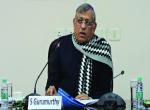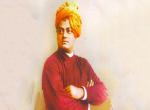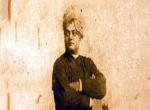“One of the first tasks before the Indian people is the rewriting of their own history.” - Sister Nivedita
Sister Nivedita (1867-1911) is one of the most well-known disciples of Swami Vivekananda. She was born as Margaret Elizabeth Noble in Northern Ireland. After meeting Vivekananda in London in 1895, she accepted him as her spiritual master. Soon, she left England to serve India and reached Calcutta in January 1898. In March, Margaret was re-christened as ‘Nivedita’, meaning ‘the consecrated one’. Her life in India for the next 13 years (till she passed away in Darjeeling) was a saga of service and involvement in the Indian national cause in all its dimensions. The year 2017 marks the 150th birth anniversary of this great soul.
Nivedita is generally known as a social worker and educationist who worked especially for the education of Indian women. What is less-known about her is that she was one of the foremost figures of her times to promote the idea of writing Indian history from an Indian perspective. She interacted with almost all the important writers on Indian history of her time and exerted an influence in terms of sharing ideas as well as affording warm encouragement. She was a friend of Romesh Chunder Dutt (1848-1909), civil servant, prolific writer on aspects of Indian history and culture, and President of Indian National Congress in 1899. She greatly appreciated his works on Indian history and wrote his obituary when he passed away. Sir Jadunath Sarkar (1870-1958) also knew her in person and later recalled her as a “rare foreigner” who possessed “that sympathetic insight which only a native can possess” 1.
Nivedita’s letter (dated 4 February 1906) to Radha Kumud Mookerji (1884-1964), another historian of repute and author of books like The Fundamental Unity of India, Indian Shipping and Ancient Indian Education, later became an essay titled ‘A Note on Historical Research’. This essay was meant to serve as a guideline for aspiring historians. She wrote many essays on different aspects of Indian history, which were later collected in a single volume titled Footfalls of Indian History. To write these essays, she travelled extensively to historical sites in India, and combined observation with deep insight. What is of greatest import are Nivedita’s ideas regarding how to understand, write and teach Indian history. A few salient features of the methodological innovation she proposed will be discussed here.
“India Herself is the Master Document”
Firstly, Nivedita said that India can only be understood in the light of Indian history. ‘The present is the wreckage of the past’; hence, if one has to understand the Indian civilization as it stands today, one has to delve into its past in order to chart the course of its development over time. At the same time, she pointed out that “India herself is the master document”2 which we have to read in order to know Indian history. She wrote, “The country is her own record. She is the history that we must learn to read.”3 Learning how to read India is an exercise that involves a specific method. Nivedita was one who wanted aspiring historians to decipher “the Indian idea of India”. For that, we require a method that will help us understand an Indian idea on its own terms and not with reference to parameters determined by non-Indian concepts.
Travel as the true Means of Understanding Indian history
Secondly, to read this past, we need not lock ourselves up in libraries. On the contrary, “In all that lies around us…, we may, if our eyes are open, read the story of the past.”4 The proper way of understanding Indian history, according to Nivedita, is through travel, “If India itself be the book of Indian history, it follows that travel is the true means of reading that history.”5 Since Nivedita was an educationist by training, she was well aware of the new educational ideas that were flooding parts of Europe at that time. These ideas emphasized on the need of “activity” as part of formal education and the need to involve all sense faculties like sight, touch and so on for the acquisition of knowledge. With these ideas, Nivedita could seamlessly synthesize what she derived from Indian knowledge traditions. She thus wrote, “Remember that Truth in its fullness is revealed, not only through the intellect but also through the heart and the will. Never rest content, therefore, with a realization which is purely mental…We have other senses and other faculties besides those of language. We have limbs as well as brains. Use the body. Use all the senses, use even the limbs in the pursuit of truth. That which is learnt ‘not only with the mind by means of manuscripts and books but also through the eyes and the touch, by travel and by work’, is really known. Therefore, if you want to understand India, visit the great historic centres of each age. Turn over the earth and stroke the chiseled stones with your own hands, walk to the sight that you want to see…Stand in the spot where an event happened… .”6
The importance of Geography
An important component of Nivedita’s historical thinking was her emphasis on geography and the history of place, especially the layered histories of ancient cities. She said that “History must be viewed geographically and geography historically”7. If geography be invoked to serve the cause of history, it would be easily discernible how a notion of territorial and civilizational identity—no matter how it was defined—was already present in pre-colonial India. It was a result of stable geographical boundaries, busy pilgrimage routes and destinations spread across the length and breadth of the country, vibrant ancient cities that acted as centres of culture, and great political empires. In other words, the unity of India was not a gift of British rule as many British imperialists liked to claim.
India as a Synthesis
One of the key features of Indian nationhood is diversity. Nivedita provided the key to understanding the dynamics between diversity and unity in the Indian context, “…India is and always has been a synthesis. No amount of analysis—racial, lingual, or territorial—will ever amount in the sum to the study of India…all the parts of a whole are not equal to the whole.”8 In other words, India as a nation is not merely the sum of different regions professing separate identities; the whole has a life of its own. There has been a national cohesion—a synthesis—as a result of historical processes. According to Nivedita, the task before the historian is precisely this, “… apart from and above, all the fragments which must be added together to make India, we have to recognize India herself, all-containing, all-dominating, moulding and shaping the destinies and the very nature of the elements out of which she is composed…No Indian province has lived unto itself, pursuing its own development, following its own path, going its way unchallenged and alone.”9
Nivedita held European treatises on Western History in high regard because of their method — 'the connectedness of the treatment of each life with others’ is what she appreciated most in these works. And she lamented about the history of India written during her times, “In Indian History, such a point of view is conspicuous by its absence. Some writers are interested in Buddhist India (if indeed we have any right to employ such a term) and some in various stages of Mahratta or Sikh or Indo-Islamic History or what not. But who has caught the palpitation of the Indian heart-beat through one and all of these? It is ‘India’ that makes Indian History glorious.”10 In fact, what appealed most to Nivedita in Romesh Chunder Dutt’s writings was that he had been able to discover ‘the Indian mind, as revealed in Indian history and literature.’11
Serving ‘Indian Nationality’
In the pursuit of Indian history, what was of paramount importance to Nivedita was the moral aim of that pursuit. For her, “Knowledge without a purpose is mere pedantry.”12 Hence, she insisted that whatever we do as historians, through it we should “serve the Indian Nationality”.13 Moreover, according to her, Indian history can only be taught by a person who truly loves India. The pursuit of India’s past is not divorced from India’s future. Nivedita strongly believed that the past, present and future form a sequence. If the present is a wreckage of the past, then the “future waits for us to create it out of the materials left us by the past, aided by our own understanding of this our inheritance.” 14
Bringing the Past to the Door of Everyone
An important step in instilling a love for the country will be the popularisation of Indian history. As Nivedita put it, “We love that which we think of, we think of that which we know.” Again, “If we would impart a love of country, we must give a country to love.”15 Nobody can love a country that one cannot imagine. Therefore, it is important to take the past of the nation to every door by every possible means. As Vivekananda had said: “…whoever tries to bring the past to the door of everyone, is a great benefactor to his nation.”16 Two methods were deemed important by Nivedita for taking Indian history to the Indian people: (1) pictures; and (2) historical writings in the vernacular. Thus, she wrote: “Pictures, pictures, pictures—these are the first instruments in trying to concretise ideas, pictures and the mother-tongue.” 17
Sister Nivedita has reminded the young aspiring historian: “…the fruits of our labour are to be given to man, not selfishly enjoyed. Better a low attainment generously shared than a high vision seen by oneself alone. Better because more finally effective to the advance of knowledge.” 18
Endnotes
1. R. C. Majumdar and A. S. Altekar (eds.), A New History of the Indian People, Moti Lal Banarsi Dass, Lahore, 1946, vol. 6, p. vi.
2. Sister Nivedita, ‘The History of India and Its Study’, in Footfalls of Indian History, Advaita Ashrama, Kolkata, 1915, p. 6.
3. Ibid., p. 6.
4. Ibid., p. 14.
5. Ibid., p. 14.
6. Sister Nivedita, ‘A Note on Historical Research’, in Hints on National Education in India, Udbodhan Office, Kolkata, 1966, pp. 96-97; emphasis added.
7. Sister Nivedita, ‘The Future Education of the Indian Women’, in Hints on National Education in India, p. 59.
8. Footfalls of Indian History, p. 16; emphasis added.
9. Ibid., pp. 16-17.
10. Hints on National Education in India, p. 103.
11. Sister Nivedita, ‘Romesh Chandra Dutt’, in The Complete Works of Sister Nivedita, Sister Nivedita Girls’ School, Calcutta, 1955, vol. 5, pp. 262-63.
12. Hints on National Education in India, p. 98.
13. Ibid., p. 99.
14. Footfalls of Indian History, p. 14.
15. Hints on National Education in India, p. 61.
16. Swami Vivekananda, ‘Reply to the Address of the Maharaja of Khetri’, in The Complete Works of Swami Vivekananda, Advaita Ashrama, Kolkata, 1989, vol. 4, p. 324.
17. Hints on National Education in India, p. 61.
18. Footfalls of Indian History, p. 96.
(Views expressed are of the author and do not necessarily reflect the views of the VIF)











Informative and illuminating write up. Thanks for sharing.
Post new comment